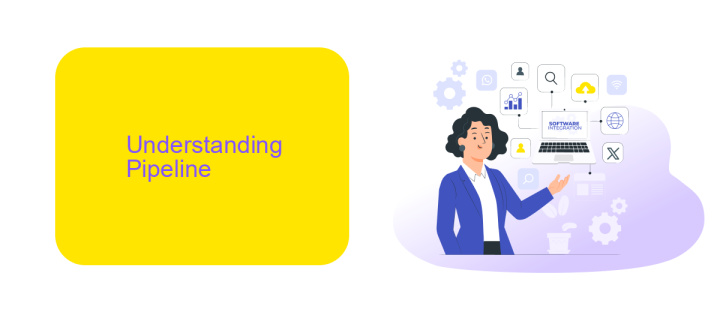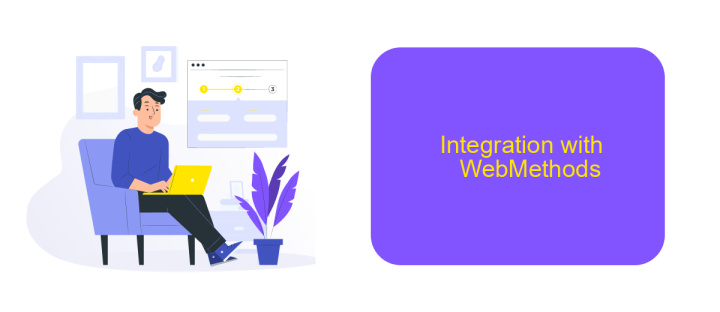What is Pipeline in Webmethods
A pipeline in webMethods is a crucial component that facilitates the seamless flow of data between different services within an integration process. It serves as a data structure, enabling the transfer and transformation of information from one step to another. Understanding the intricacies of pipelines is essential for optimizing performance and ensuring smooth communication in webMethods integrations.
Introduction
Pipeline in Webmethods is a fundamental concept for anyone involved in integration and automation processes. It enables seamless data flow between various services and applications, ensuring that information is efficiently passed and transformed as needed. Understanding how to configure and manage pipelines is crucial for optimizing integration workflows and achieving business objectives.
- Data Transformation: Pipelines allow for the transformation of data formats to meet the requirements of different systems.
- Error Handling: Proper pipeline configuration ensures that errors are managed and resolved efficiently.
- Service Orchestration: Pipelines facilitate the orchestration of multiple services to work together in a cohesive manner.
For those looking to simplify the setup and management of their integration processes, services like ApiX-Drive can be invaluable. ApiX-Drive offers tools that help automate data transfer and synchronization between various platforms, making it easier to build and maintain efficient pipelines. By leveraging such services, businesses can focus more on their core activities while ensuring robust and reliable data integration.
Understanding Pipeline

In webMethods, a pipeline is a core concept that refers to the flow of data between different services and components within an integration. It acts as a conduit through which data is passed, manipulated, and transformed as it moves from one service to another. Understanding the pipeline is crucial for building efficient and effective integrations, as it ensures that data is correctly formatted and transferred at each step of the process. By managing the pipeline effectively, developers can ensure smooth data transitions and reduce the risk of errors.
When configuring integrations, tools like ApiX-Drive can be invaluable. ApiX-Drive simplifies the process by providing a user-friendly interface for setting up and managing data flows between various applications and services. This platform allows users to connect their webMethods integrations seamlessly with other systems, ensuring that data is transferred accurately and efficiently. Utilizing such tools can significantly enhance the capabilities of your pipeline, making it easier to maintain and scale your integrations.
Benefits of Using Pipeline

Using a pipeline in Webmethods offers numerous advantages, enhancing the efficiency and effectiveness of integration processes. By streamlining data flow between various services and applications, pipelines ensure smoother and more reliable operations.
- Improved Data Management: Pipelines facilitate the seamless transfer and transformation of data, reducing the risk of errors and inconsistencies.
- Enhanced Performance: By optimizing the flow of data, pipelines help in minimizing latency and improving the overall performance of integration processes.
- Scalability: Pipelines can easily scale to handle increasing volumes of data and complex integration scenarios, making them suitable for growing businesses.
- Ease of Maintenance: Pipelines simplify the monitoring and troubleshooting of integration processes, reducing the time and effort required for maintenance.
- Integration with Services like ApiX-Drive: Pipelines can be integrated with tools like ApiX-Drive to automate data exchange between different applications, further enhancing the efficiency of integration workflows.
Incorporating pipelines into your Webmethods environment not only streamlines your integration processes but also provides a robust framework for managing data flow. This leads to more reliable, scalable, and maintainable solutions, ultimately contributing to the success of your integration projects.
Integration with WebMethods

Integrating with WebMethods allows businesses to streamline their processes by connecting various applications and data sources. This integration is essential for automating workflows and ensuring seamless data exchange between systems.
WebMethods provides a robust platform for building and managing integrations. It supports a wide range of protocols and standards, making it versatile and adaptable to different business needs. By leveraging WebMethods, organizations can reduce manual intervention and minimize errors.
- Automated data synchronization between disparate systems
- Real-time data processing and transformation
- Scalability to handle increasing data volumes
- Enhanced monitoring and error handling capabilities
For those seeking an additional layer of integration management, services like ApiX-Drive can be invaluable. ApiX-Drive simplifies the integration process by providing a user-friendly interface for connecting various applications without extensive coding knowledge. This can complement the capabilities of WebMethods, offering a more comprehensive integration solution.
Conclusion
In conclusion, understanding and effectively utilizing the pipeline in WebMethods is crucial for optimizing integration processes. The pipeline serves as a fundamental component that allows for the seamless flow and transformation of data between various systems and applications. By mastering its functionalities, developers can ensure that data is accurately processed and transferred, leading to more efficient and reliable integrations.
Moreover, leveraging tools like ApiX-Drive can further enhance the integration experience. ApiX-Drive provides a user-friendly platform for automating data transfers and synchronizing information across different services without the need for extensive coding. This can significantly reduce development time and effort, allowing businesses to focus on their core activities while maintaining robust and scalable integrations. By combining the power of WebMethods' pipeline capabilities with the flexibility of ApiX-Drive, organizations can achieve a more streamlined and effective integration strategy.


FAQ
What is a pipeline in webMethods?
How does the pipeline work in webMethods?
Why is the pipeline important in webMethods integrations?
Can I manipulate the pipeline data in webMethods?
What happens if there is an error in the pipeline?
Time is the most valuable resource in today's business realities. By eliminating the routine from work processes, you will get more opportunities to implement the most daring plans and ideas. Choose – you can continue to waste time, money and nerves on inefficient solutions, or you can use ApiX-Drive, automating work processes and achieving results with minimal investment of money, effort and human resources.

